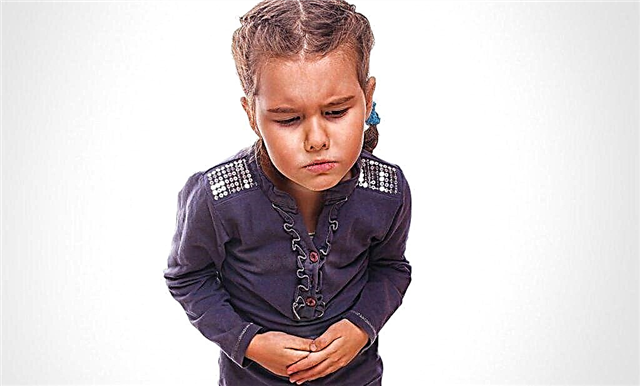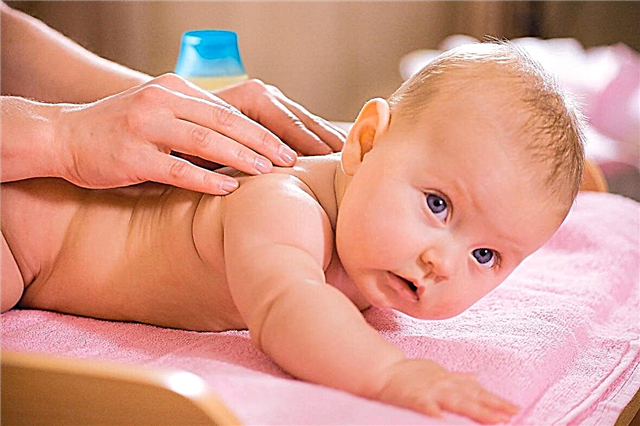Why can a child have spots on his tongue?
The reasons for these changes can be very different. Scientists from all over the world are engaged in this issue, since the language is a multifunctional organ, and any changes in the structure of its tissues may indicate a more serious pathology from other organs and systems.
The appearance of spots on the tongue can be triggered by:
- violation of digestive processes;
- tongue injuries;
- fungal infection;
- an allergic reaction;
- an infectious disease (for example, scarlet fever, herpes infection);
- malignant and benign neoplasms in the digestive organs;
- sexually transmitted disease (for example, syphilis), etc.

The structure of the mucous membrane of the tongue
As you know from the lessons of human anatomy, the tongue is an unpaired outgrowth at the bottom of the oral cavity. This organ takes part in the act of chewing, the formation of sounds and speech, the perception of taste and salivation.
A feature of the mucous membrane of this organ is the tight fusion of the lingual fascia and intermuscular connective tissue. Another feature is the absence of a submucous layer. Due to these factors, the mucous membrane remains motionless and does not tend to collect in folds. From the outside, the mucous membrane is covered by stratified squamous epithelium. This membrane contains glands, taste buds and lymphoid formations.
At the tip, back, root, edges of the tongue, its surface is rough. The lower surface of the border groove looks smoother, and its anterior part is thicker, with various nodular eminences from the lymphatic follicles. The frenulum of the tongue is formed from the mucous membrane along the median line, and fringed folds are formed on the sides of it, which converge forward.
In the posterior part of this organ, this membrane creates three folds (one unpaired - the median, and two paired - lateral), having their direction towards the epiglottis (they were called lingual - the epiglottis folds). Each of them is bordered by the epiglottis notches.
The upper surface and anterior part of the edges of the tongue from the border groove, covered with papillae of the tongue. On the body of this organ, papillae are formed from the epithelium and the mucous plate. There are several types of them: filamentous, mushroom, grooved, cone-shaped, leaf-shaped. Each of which differs from each other in location, structure, function, quantity.
What do changes in the color of the mucous membrane of the tongue indicate?
The appearance of a different color of the tongue can occur with a particular disease associated with the pathology of one or more organs. But in order to determine exactly where "the failure occurs", it is important to know the location of the spots. And only after that it is possible to judge the localization of the disease.
A change in the color of the mucous membrane of this organ occurs due to its coating with a plaque, and the severity of the pathology often depends on the degree of its severity.
| Tongue coloring | The reasons for its appearance |
| Red | Infectious diseases, high hyperthermia |
| Dark red | Renal failure, infectious diseases |
| Raspberry (strawberry) | Scarlet fever, B12 - deficiency anemia |
| Very pale | Anorexia, anemia |
| Yellowish | Impaired liver function, excess bile in the gallbladder |
| Blue | Diseases of the cardiovascular system, heart rhythm disturbances |
| Dark purple | Blood clotting disorder, ischemic heart disease, chronic heart failure |
| Black | Hypovolemia (with dehydration), severe functional disorders of the gastrointestinal tract, cholera, long-term antibiotic therapy |
| Green | Bile stagnation |
| Brown | Kidney disease |
| Blue | Dysentery, typhoid fever |
What can spots on a child's tongue indicate?
The appearance of this symptom may indicate the presence of an infectious and non-infectious process in the baby. Examples of non-communicable diseases are: gastritis, gastric ulcer and duodenal ulcer, appendicitis, cholecystitis, B12-deficiency anemia, heart failure, etc. An example of an infectious disease is scarlet fever, measles, foodborne disease, dysentery, typhoid fever, etc.
A variety of spots on the tongue of a child
This organ reflects the work of many organs and systems of the human body, therefore, various spots can appear on its surface, and its color, shape, size can also change. All these characteristics allow the doctor to differentiate where the pathology is localized.
The spots on the tongue of the baby can be very diverse: red, white, geographical, yellow, dark and bald.
Red spots on the tongue
If you notice that the tongue of your baby has become a different color or some spots have appeared on it, inform the pediatrician about this, and he will already decide what to do with it and how to examine the baby.
Red spots on the tongue of a child, in most cases, are painful. When they appear, children eat poorly, are capricious. High hyperthermia may occur. Since they are almost always based on infectious diseases.
The appearance of spots of this color can be with herpes, glossitis, stomatitis, bacterial dermatosis, allergic reactions, scarlet fever, syphilis, etc.
The color of the tongue may change after the consumption of coloring foods or dyes in them (for example, beets, cherries, blackberries, currants, colored soda, candies, and other sweets).
A red spot on the tongue of your baby can also appear as a result of an allergic reaction, often it appears on its tip. If this type of change occurs, it is recommended to consult not only a pediatrician, but also an allergist.
White spots

Most often, this kind of spots appears in infancy. Their occurrence is due to a weakening of the baby's immunity or infection from the mother (during labor or during gestation). At this age, they have a second name - thrush (it is characterized by the fact that spots are formed on the mucous membrane of the tongue, which have different shapes and sizes, and a plaque rises above them, which has a cheesy consistency).
Despite the fact that thrush at this age is quite common, you should not start it! It is necessary to immediately inform the doctor about this, as more serious complications may arise.
In adulthood, such spots can appear in people with a weakened immune system, in the form of a secondary infection (with chemotherapy, anorexia, severe anemia, AIDS, etc.).
Geographic spots
On the mucous membrane of the tongue, spots appear that have a red color and are framed with white or yellow bloom. They tend to change shape and location. These changes are painless and not dangerous. Most often, their appearance is associated with chronic diseases of the digestive system, allergic diseases, helminthic invasion, hormonal changes, and in some cases with mental disorders.
In childhood, the appearance of this type of stain is almost always associated with food allergies or helminthic infestation.

Yellow spots
They can cover the entire tongue or be at the tip of the tongue. Their appearance most often indicates a disease of the digestive system. Often this symptom can be combined with the appearance of an unpleasant odor from the baby's mouth.
This type of change does not heal on its own, and parents need to consult a doctor for further examination and prescribing the necessary therapy.
The simultaneous appearance of bitterness and yellow plaque indicates weak digestive sphincters and the throwing of bile into the mouth.
Dark spots
Their appearance may be associated with food (currants, blueberries, blackberries can stain the mucous membrane of the tongue), but there are more weighty reasons for their manifestation.
The appearance of black spots on the tongue of the crumbs may be due to helminthic invasion and a bacterial infection that has been treated with antibacterial drugs for a long time. With properly prescribed therapy, they disappear on their own and without a trace.
The appearance of blue spots is most often associated with problems in the work of the cardiovascular system (congenital and acquired heart defects, vascular tumor, etc.).
If the baby has such changes, then an urgent consultation with a cardiologist is required to select further treatment tactics. Some children may also need surgery.
Bald spots
This type of language change can be a consequence of his injury, glossitis or burns. When examining the baby's oral cavity, "bald" areas of an asymmetrical shape and with an uneven pink color are noticeable. It should be noted that they do not require special treatment, since they disappear on their own.
Be careful with children, as most often this type of stains appear in babies after injuries, the use of household chemicals and other toxic substances.

Who should I show the child to?
When any kind of spots appear, it is imperative to show the baby to the pediatrician, and he will already decide where to send the baby further or treat these changes on his own.
Most often, the pediatrician copes with this pathology on his own, but he can send for a consultation to a gastroenterologist, dentist, cardiologist, surgeon, hematologist, allergist, infectious disease specialist, nephrologist.
A stain on a child's tongue is not an independent pathology, but the result of damage to other organs and systems of the human body.
What tests will help find out the cause of the appearance of red spots on the tongue of a child
In order to diagnose the cause that caused the red spots on the tongue of the crumbs, the doctor may prescribe:
- general blood analysis;
- bacteriological analysis. He is appointed for the purpose of examining scrapings from the surface of the tongue in order to identify microorganisms and determine how sensitive they are to medications;
- immunofluorescence analysis (to detect streptococcus antigens with scarlet fever, intracellular accumulations of herpes simplex virus in scrapings, etc.);
- serological analysis (to determine the content of anti-O-streptolysin in scarlet fever);
- skin tests;
- provocative tests, etc.
How to treat?

Therapy of spots on the tongue without setting the correct diagnosis of the disease is prohibited, since it is possible to harm the baby. It is important to know the etiology of their formation.
If the baby has glossitis, stomatitis or other diseases of the oral cavity, the pediatrician may prescribe a dentist's consultation to select the correct therapy. In most cases, such drugs are used for this pathology: Stomatidin, Cholisal, Miramistin, etc.
If a gastroenterological problem is detected, the baby must be examined by a gastroenterologist without fail. If spots appear due to a violation of microflora, probiotics (Bifidumbacterin, Linex, Enterol, etc.) can be prescribed.
In severe cases (the formation of deep ulcers and no effect of treatment), the doctor may insist on an operation.
Each specific case requires an individual approach to therapy.
If the baby has a geographical language, the doctor may prescribe: taking multivitamins, treating the oral cavity with antiseptic solutions (for example, Miramistin), as well as drugs that accelerate the natural regeneration of tissues.
In the case of the appearance of yellow spots, no treatment is required, but an examination of the baby is needed to identify the cause of their occurrence.
If a child has changes in the language due to the manifestation of infectious processes, for example, scarlet fever, it is necessary to immediately call a doctor to confirm or deny the diagnosis. Before the arrival of the pediatrician, you need to isolate the baby. In case of confirmation of the disease, the following can be prescribed: hospitalization, abundant warm drink, treatment of the oral cavity with antiseptic solutions, antibacterial and vitamin therapy, and more (depending on the patient's condition).
If the baby has red spots with an allergic etiology, it is most often necessary to prescribe antihistamines (Zodak, Erius, Fenistil) and adsorbents (Polysorb, Smecta, etc.).
Since black spots in most cases are caused by helminthic invasion or prolonged use of antibacterial drugs, the use of anthelmintic drugs (after confirming the diagnosis) and probiotics (Acipol, Khilak, Bifiform) is recommended.

Baby food recommendations
Since this pathology can be provoked by a huge number of reasons, nutrition should be aimed at excluding exacerbations of diseases of the gastrointestinal tract, allergic, hematological and other diseases.
It is recommended to exclude fast food, spicy, fatty, fried, allergenic foods in order to prevent the occurrence of diseases of the digestive system (gastritis, enteritis, etc.) and not cause an allergic reaction.
Child mode
It is recommended to observe the regime of sleep and rest, walking in the fresh air for at least one to two hours a day, to strengthen the immune system with physical activity and hardening.
Parting words to parents
Do not be immediately scared at the sight of your baby's "unusual" tongue. This manifestation is not always the cause of a serious pathology, but it is imperative to seek the advice of a specialist! Only after the child has been examined by a pediatrician is it possible and necessary to start treatment. Take care of your children and do not self-medicate! Be healthy!



